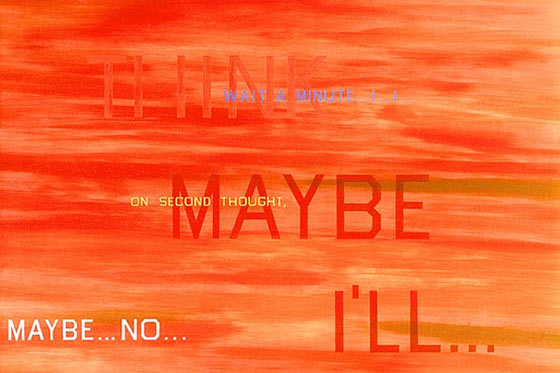
This week we got our first look at the ObamasÔÇÖ White House art, and it contained a few surprises. The 45 works the First Family chose to display, borrowed from various government institutions, range from simmering meditations on geometry and color by the great and under┬¡appreciated Josef Albers to depictions of Native Americans by the ever-mysterious George Catlin to a glowing abstract Zen TV screen by Mark Rothko to otherworldly still lifes by the minor modern master Giorgio Morandi. They topped off the collection with three geeky U.S. Patent models (a paddle wheel, a telegraph, and a prototype for a gear cutter), a realist portrait of Harry S. Truman, works by Native American artists (including a fantastic ceramic by Maria Poveka Martinez), Jasper JohnsÔÇÖs super-strange low-relief ÔÇ£0 Through 9,ÔÇØ and paintings by Sam Francis, Winslow Homer, Richard Diebenkorn, Alma Thomas, and Susan Rothenberg, among others.
Critics were quick to put a gloss on the collections meaning. On the right wing, the more aggressive contemporary work in the collection came in for a predictable beating. The focus was on Ed Ruschas apparently banal, almost-monochrome conceptualist work made in 1983. I Think Ill   is an infinitely optical, obtusely cerebral fire-red/Popsicle-orange minimal field, streaked with floating phrases like, Maybe  yes, Maybe  no, and On second thought. Predictably, a clueless anti-Obama website groused that the painting was celebrating indecision.
And just as inevitably, art insiders were disappointed in the choices. The esteemed if reliably irascible Artnet critic Charlie Finch, author of Most Art Sucks, pointed out to me that there were all of six works by women artists, and wrapped it up by calling the Obamas ÔÇ£as right wing as Bush in the art department.ÔÇØ Washington Post critic Blake Gopnik sneered that some of the taste on view was ÔÇ£mildÔÇØ and mentioned that the ballet dancers rendered in bronze by Edgar Degas were once ÔÇ£considered one step up from prostitutes.ÔÇØ (Those two points would seem to contradict one another, but never mind.) Gopnik went on to slag the Morandis (ÔÇ£painted by a once-proud Fascist whoÔÇÖd sucked up to Benito MussoliniÔÇØ) and wondered if CatlinÔÇÖs uncanny 1860s renditions of the American West were ÔÇ£all about a white colonialist gawking at exotic conquered peoples.ÔÇØ Are these people kidding? Do they really think the Obamas should have hung (letÔÇÖs say) a Kara Walker paper silhouette of a slave girl performing fellatio on a slaver who excretes a pickaninny? Do they remember that only a year ago George W. Bush was decorating his office with generic cowboy paintings ÔÇö plus Saddam HusseinÔÇÖs pistol? In nine months weÔÇÖve gone from generic Western landscapes and photo-┬¡realist images of cacti to a painting by one of the most prickly contemporary artists around.
In my lifetime, IÔÇÖd never have expected to see something like a Glenn Ligon 1992 text painting, based on a line in the 1961 book Black Like Me, hanging in the living quarters of the White House. LigonÔÇÖs hauntingly beautiful, difficult-to-parse painting looks like a self-replicating printout or a hard-to-read gravestone or poster. A repeating representation of the sentence ÔÇ£All traces of the Griffin I had been were wiped from existence,ÔÇØ whatever else it is, the painting evinces a willingness to look race directly in the face and not settle for easy answers.
But back to the Ruscha and its purported embrace of indecision. In fact, what it conveys perfectly is not waffling, but thinking. Like so much of the work the Obamas have chosen, it highlights a central difference between two states of mind, the progressive and conservative. I Think Ill   effortlessly and efficiently transmits a psychic inclination that accepts paradox and allows that the world is not only good or evil. The hallmark, so far, of Obamas administration has not actually been indecision, or Clintonian triangulation. Its been a hanging back, waiting till all the facts come in, and for all the ideas to be floated, and then making a (decisive) move. This painting embodies that inclination, and its not the only one in the collection that does so.

